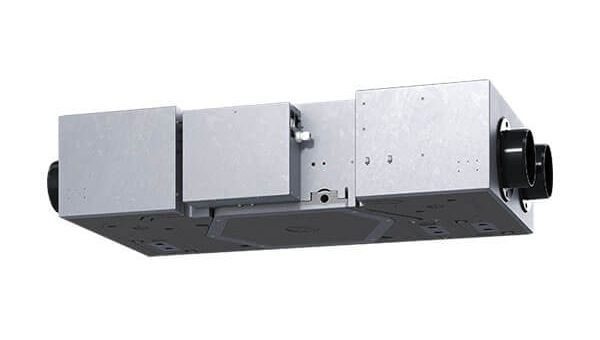Education & Advice
WHY USE A HEAT RECOVERY SYSTEM?
In the right building, a heat recovery system will significantly improve your indoor air quality as well as significantly improve your energy efficiency.
Jump to centralised and de-centralised units
Everyone wants their house to be as airtight as possible, this means in winter you can get the most out of your heating and in summer from your air conditioning. Therefore reducing costs and improving efficiency.
New buildings are built to certain energy rating standards that ensure this is the case. This improvement in thermal performance also increases risk of moisture build up. Everyday household activities such as showering, cooking and using a clothes dryer for example all introduce moisture to your living areas.
A lack of natural ventilation can cause poor air quality which can significantly contribute to respiratory problems and asthma. Not to mention condensation and mould.
What is Heat Recovery?
A Heat Recovery Ventilation (HRV) system is a form of mechanical ventilation that will significantly improve indoor air quality as well as significantly improve your household energy efficiency. A heat recovery system is fundamentally designed to provide air movement in an airtight house and should be considered when planning a new build. The principle (illustrated below in its simplest form) involves extraction of room temperature stale air and the introduction of fresh, filtered outdoor air. As the air travels through a heat exchange element the fresh air coming in replacing the extracted air is close to the same temperature as the extracted air.
A heat recovery system is also a wise addition if you are renovating an older house and in the process implement changes to improve thermal performance (for example install insulation, new double glazed windows or cover trickle vents).
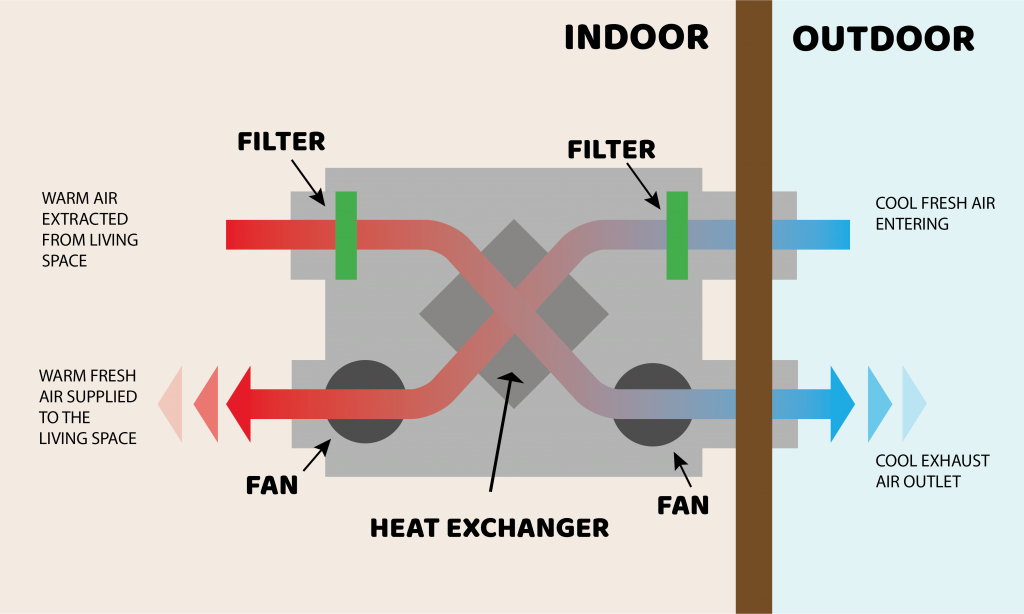
Below shows a theoretical example of a scenario whereby the indoor temperature is 20 degrees and the outdoor temperature is 0. As the warm air is extracted and passes through the heat exchange component, the cool incoming air is warmed, to the point whereby fresh incoming air is approx 18 degrees. These figures are valid for a heat recovery unit offering 90% efficiency. Needless to say this is a huge difference to an open window letting the 0 degree unfiltered air inside the house.
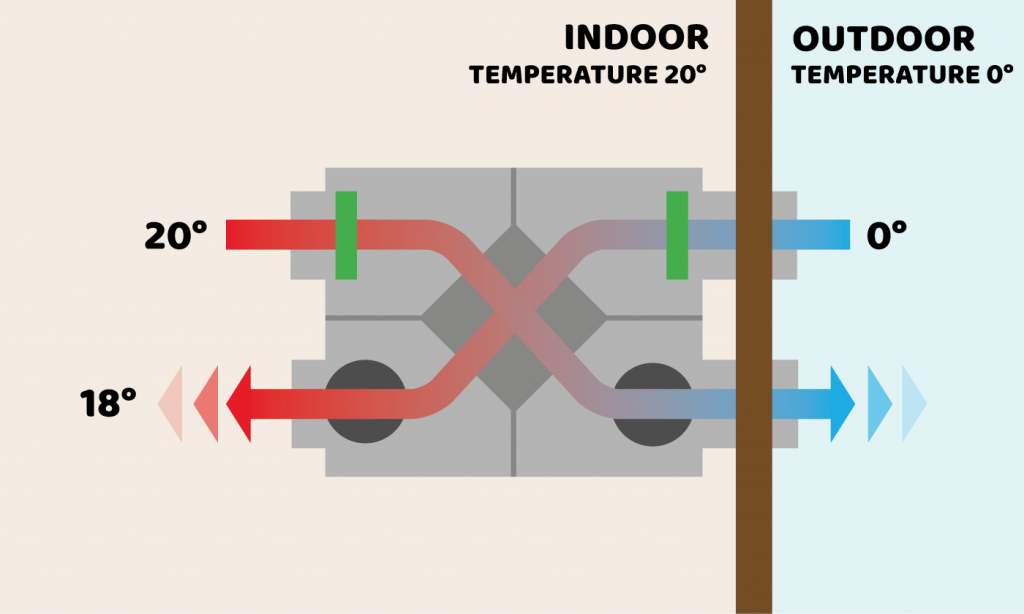
with heat recovery
House fully sealed and all windows closed with HRV system operating.
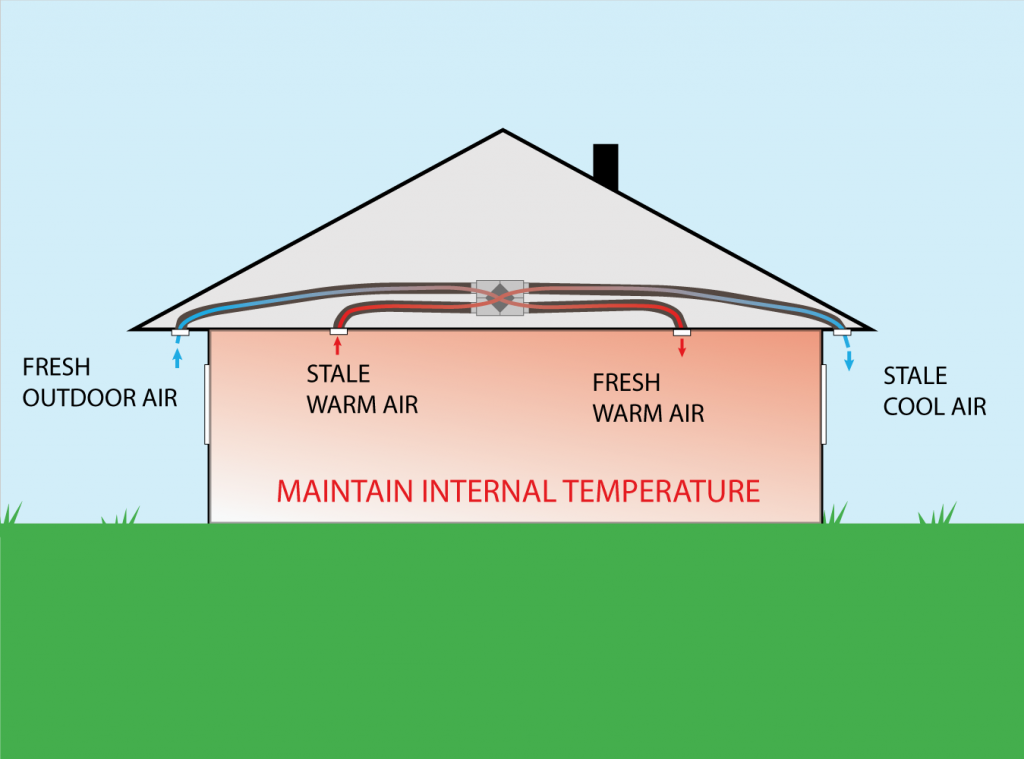
WITHOUT HEAT RECOVERY
With windows open to allow fresh air to enter with no HRV system.
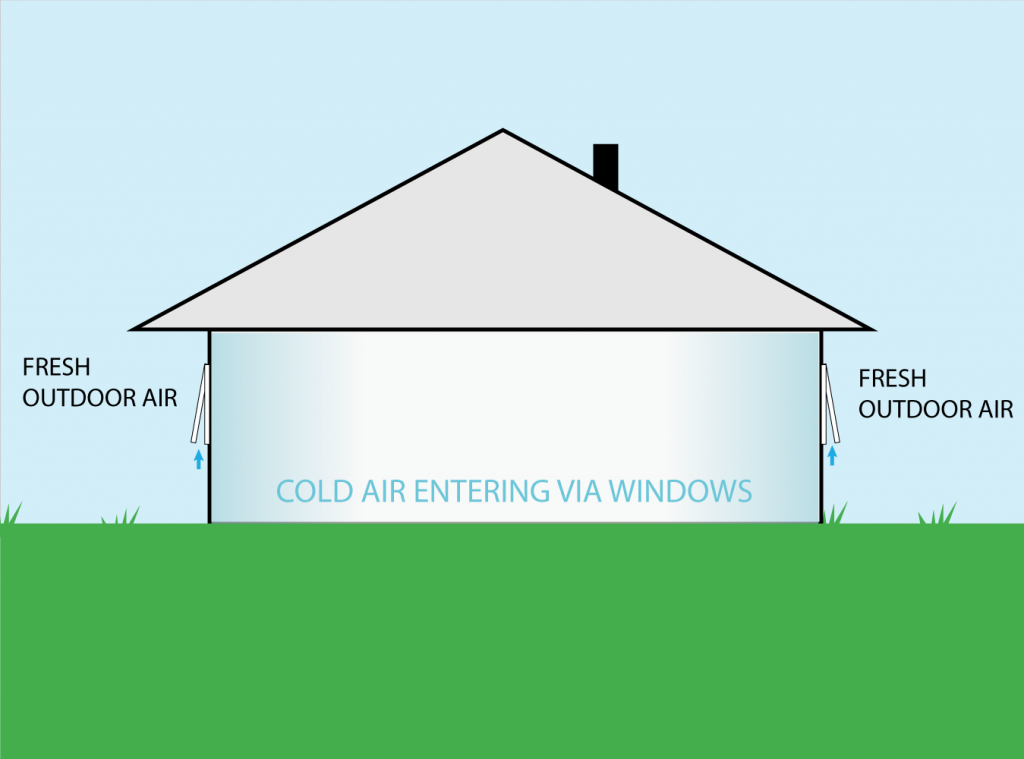
- Introduce fresh and filtered outdoor air into the home.
- Significantly improve indoor air quality – ideal for allergy or Asthma sufferers. Lack of ventilation increases the relative humidity indoors.
- Heating and cooling otherwise lost through open windows is retained, practically speaking you may not need to run your heating as high in winter which equates to power bill savings. Leaving a window open whilst running heating can result in the loss of approx 50% of heating energy.
- Ventilation becomes energy efficient as well as functional.
- Prevent mould growth and damage by removing water vapour.
- Reduction of harmful emissions, examples of which include toxins from household cleaners or Carbon Monoxide, Sulphur dioxide and nitrogen oxide from heating and cooling.
- Ensure a equilibrium of pressure – this means the amount of air entering and leaving the living space is the same.
CENTRALISED
A whole house solution – perfect for a medium to large house, either renovation or new build. Centralised systems consist of a single main unit which can be configured to ventilate all rooms via ducting typically in the roofspace. These systems are suitable for moving large volumes of air in new buildings, or older buildings that have the required space to install a unit.
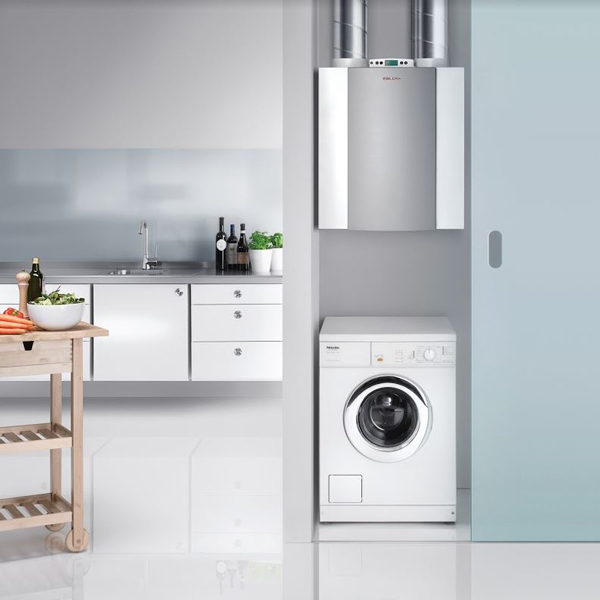
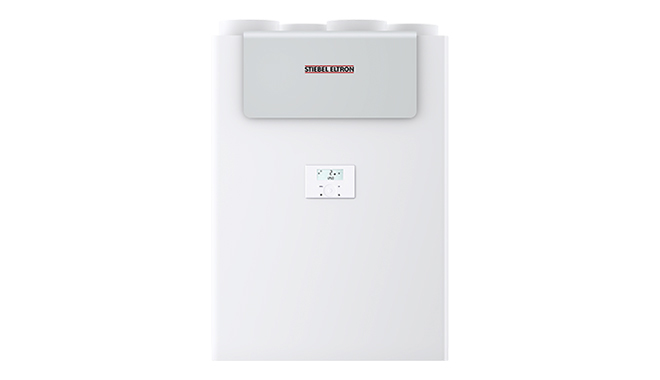
DE-CENTRALISED
A single unit, perfect for a small area (eg one bedroom apartment, separate bungalow or renovations in a building that cannot have a centralised solution). These systems do not require ducting and are generally easier to install. These units are typically advised to be installed in pairs, so as one unit is on its extraction cycle the other will supply. Units are typically placed high on a wall in a corner.
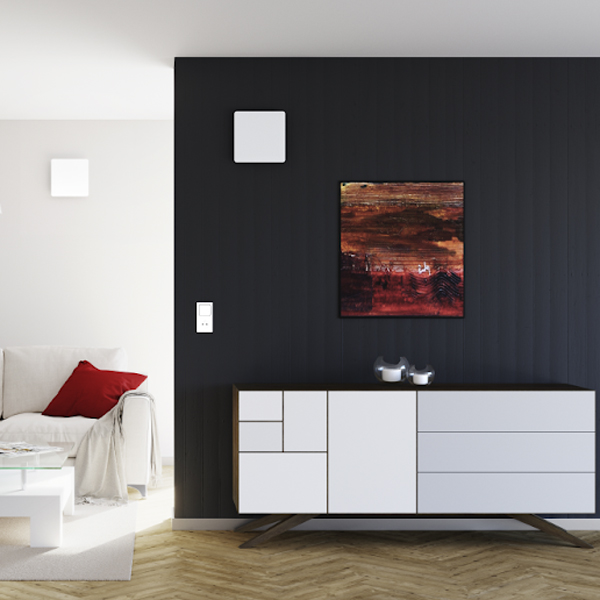
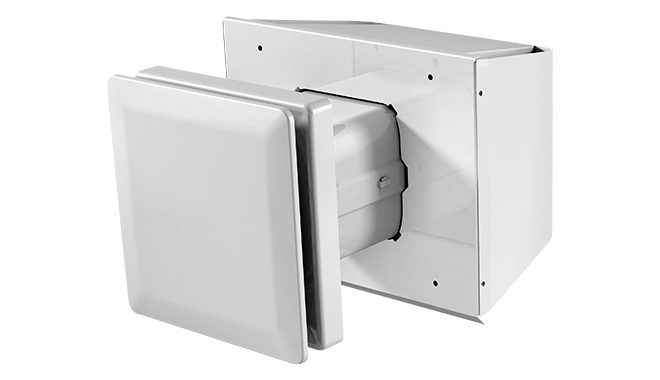
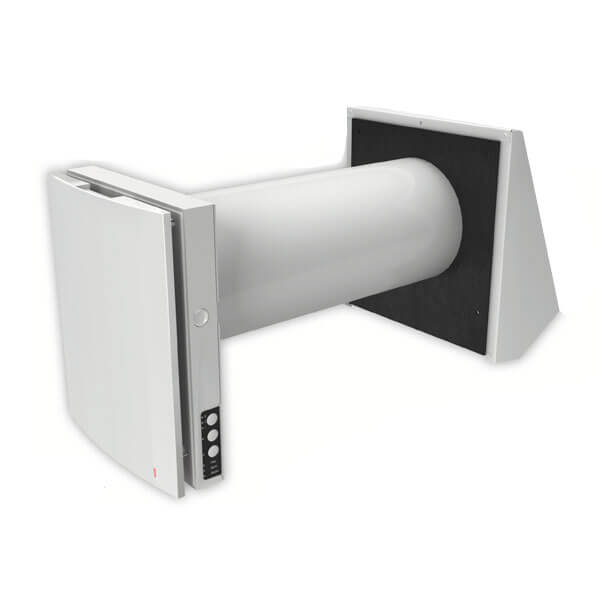
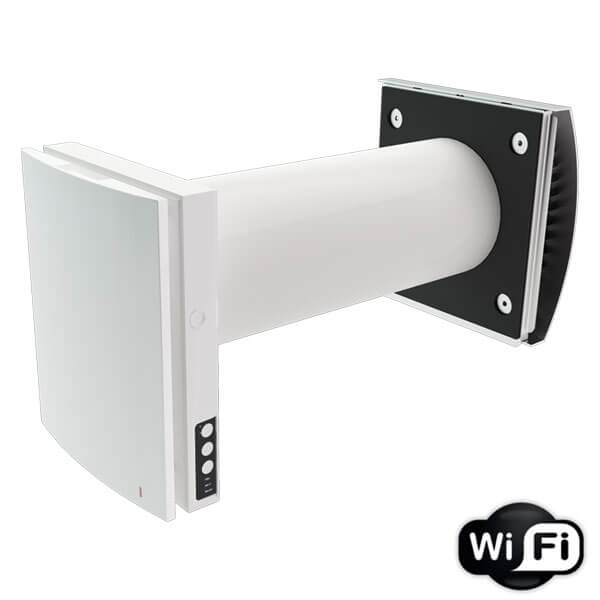
Sealed rooms require a regular supply of fresh air. There are variables that determine the required extraction rate such as the size of the living space, number of extraction points and number of occupants in the house. As a very general rule of thumb a minimum hourly air change could be 0.4 – 0.5 times the area volume. A more demanding environment may require something higher.
With a centralised system it is also important to consider the sensation of a draft, so it is necessary to limit the extraction rate per outlet.
For this reason it is important to seek professional advice when putting together a system.

